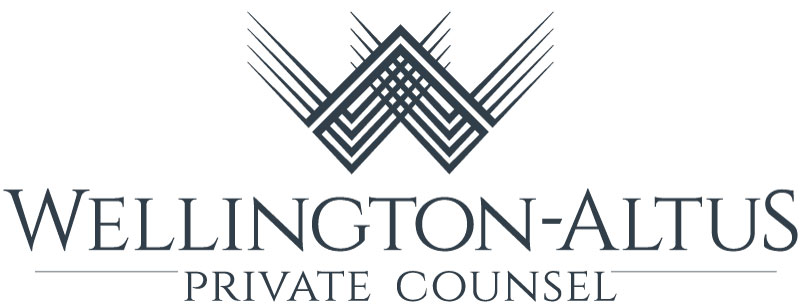Martin Pelletier: Risk is a balancing act between not settling for safe but mediocre returns, but not chasing high-flying assets
Risk is truly a four-letter word and the nature of it, like our perception of reality, depends on where you are standing.
Some of us actively seek it out while many of us fall prey to what is called the region-beta paradox, as I recently learned from an investment class my son is taking at the University of Calgary, that just so happens to be taught by a friend of mine. This paradox is that we often avoid risk and tolerate mediocrity and not-too-bad situations to avoid change and discomfort, but miss out on growth and the rewards that come with it.
Perhaps this is what essayist and former trader Nassim Taleb meant when we said that “the three most harmful addictions are heroin, carbohydrates, and a monthly salary.”
When it comes to managing risk, my entire professional philosophy and approach is built around goals-based investing. This means focusing on a specific target return for each client, depending on their own financial goals and objectives and then adjusting the risk level, given market conditions and their overall tolerance for it.
Since the types of clients we work with generated substantial wealth by taking a lot of risk as entrepreneurs or professionals, there usually isn’t a huge appetite for risk taking as they approach retirement or are already in it. Therefore, obtaining a six to eight per cent annual return while mitigating the ups and downs of the market is plenty enough to meet lifestyle spending requirements and leaving a large inheritance to their family or to charity.
As a result, we have little desire for higher-risk levered beta plays such as cryptocurrencies or chasing high flying U.S. tech that also comes with a lot of volatility, meaning downside risk that matches upside potential. However, we have to be especially careful not to fall prey to the region-beta paradox, with investments such as the traditional, passive 60/40 portfolio, and settling for mediocre returns.
This means it is important for us to adjust risk levels based on the market environment. This allows us to participate in broader market rallies such as what we’ve witnessed over the past two years and minimize the impact of a correction such as in 2022.
I am not implying you should try to time the market with actions such as moving to cash, as there is all kinds of evidence showing this is impossible to do. That said, tactics such as using the options market can both tell you a lot about the environment you are in and provide the ability to add insurance when it is inexpensive, even when you think you don’t need it.
Today, surprisingly, market participants appear not to be overly concerned about the numerous uncertainties around potential global trade wars and heightened geopolitical uncertainty.
Corporate bond spreads are at ultra low levels. High-yield bonds, or junk bond prices, are approaching new highs, U.S. tech companies are trading at levels not seen since the dotcom bubble, and investors are buying every dip on the S&P 500 despite historical data telling them that, based on current multiples, the forward annualized 10-year return has been a paltry plus or minus two per cent. By the way, this doesn’t imply flat markets over this entire period but rather the high probability for a sizable correction.
There is a time to add risk and a time not to, and we think now is not the time. For those who follow hockey, we’re coming out of some solid wins over the past two periods and why not play a little more defensive heading into the third period? We call this our trap zone investment strategy, aiming for as much downside protection as possible so that we can secure the past two years of solid returns while still being able to participate in the market upside this year with a targeted mid-to-high single digit return.
For example, the current level of complacency allowed us to put a trade on the Russell 2000 index where the insurance was so cheap that we were able to fully protect the downside with 15 per cent capped upside through to this fall. We also sold nearly our entire tech-heavy S&P 500 exposure, locking in some excellent returns, and replaced it with U.S. value stocks via a diversified exchange traded fund. We worry that tariffs have the potential to really hurt many of the companies dominating the S&P.
In regards to the Canadian energy heavy market, who knows where global energy markets will settle out. U.S. President Donald Trump is going after Iran with strong sanctions, which would likely send oil prices higher, but the Russia-Ukraine war could be dealt with, resulting in more Russian barrels and lower oil prices. And there remains added tariff risk, as we only have one market to send our oil to.
Now that we’ve been given a month to get things sorted out before Trump said the tariffs will kick in, why not use it to also re-risk. For example, we locked in some very large gains on our energy companies, reducing our long exposure by half. We replaced it with a U.S. dollar denominated structured note that has 40 per cent downside protection and, should they trade positive in a year, we obtain a 20 per cent coupon. We also did a similar trade on Canadian pipeline and utility companies but with a geared 30 per cent downside, and a 14 to 15 per cent coupon.
These are just a few of the many strategies we’ve deployed, but hopefully they demonstrate that there is value in managing risk in your portfolio. Just like there is a good time to eat carbohydrates, but I tend to save them for after winning that third period of a hockey game.
